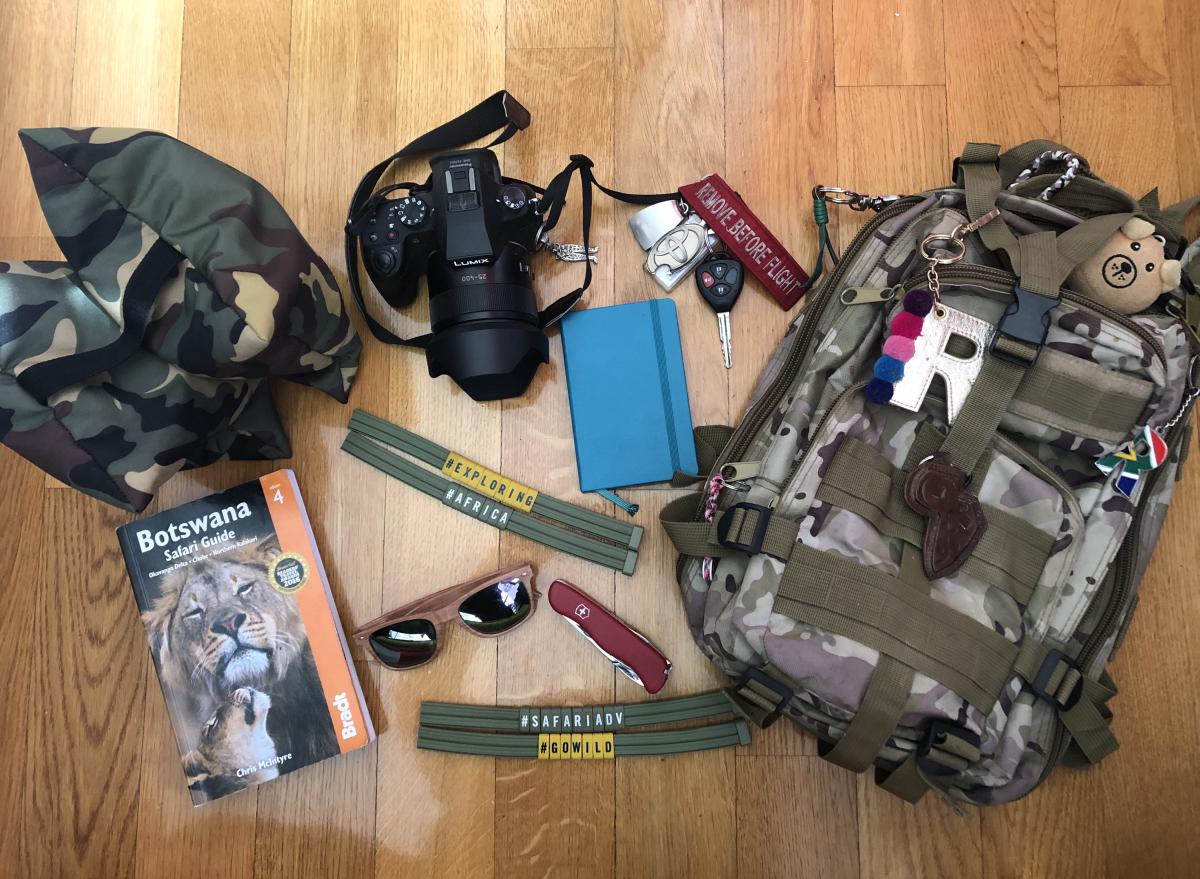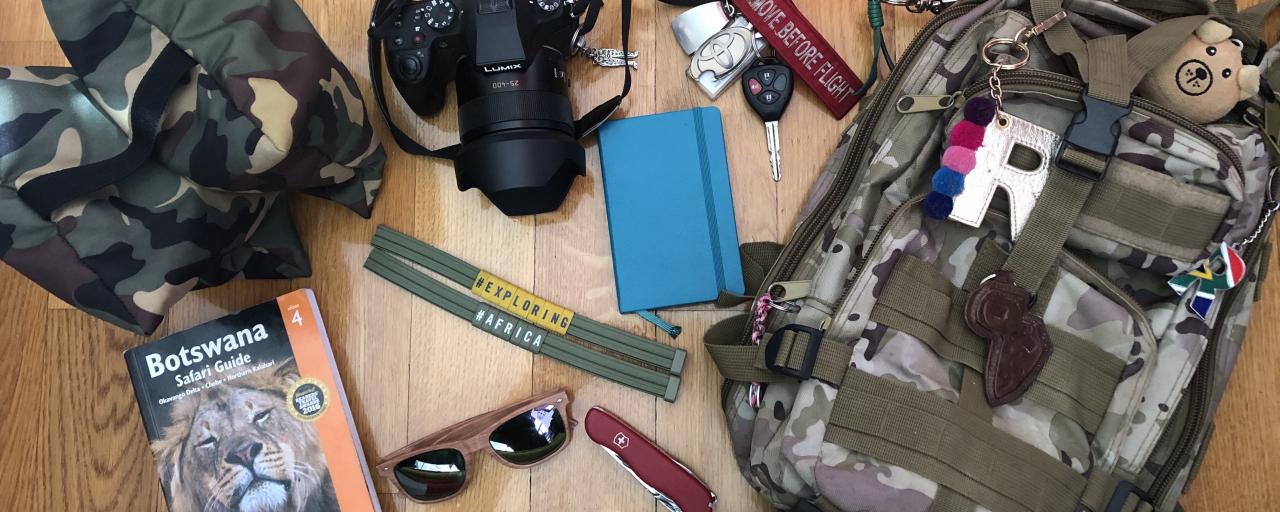Submitted by SafariADV on Wed, 2019-10-30
Tomorrow we leave for our trip to South Africa and Botswana, it doesn't seem real!
For months we have not seen the time for this moment to arrive, months spent studying the itineraryand fantasizing about when we would have been in the most complete silence of the savannah, broken only by the sound of the wind; finally it's time to leave!
Today is dedicated to suitcases, this is an activity to be carried out carefully since, apart from Johannesburg, we will not have many opportunities to go shopping, so we must be careful not to forget anything; for this reason I have an excel file where I have marked everything that must not be missing in our suitcase, so we are sure to bring everything and only what is necessary.
The perfect suitcase for a safari in Africa
There are several things that cannot be missing in the suitcase of those preparing to go on a safari in Africa, even the choice of the type of baggage is very important.
We are very scrupulous and thanks to our excel file we never forget anything, just because it is not easy to find some things once we arrive at our destination; moreover our journey is a self-drive with self-catering so there is also some food that we have to bring because it cannot be found in South Africa and Botswana.
Suitcases and hand luggage for a safari in Africa
On a safari it is always better to bring small and preferably soft suitcases, the space on safari cars is never much and a soft suitcase, in addition to being better suited to spaces, is less likely to get damaged; the same goes for our Dr. Livingstone, the space is not much so everything has to be stuck to the best.
As far as the hand luggageis concerned, it depends a lot on its content; for example we have two technical backpacks for photographic equipmentand these are our main carry-on bags.
Then we always carry a backpack eachthat we use during the trip to have with us everything we need, often for the flight we put them in a soft trolley along with other things that we do not want to send such as life-saving drugs, objects of value, documents and my make-up, yes, who said that you have to give up your look in the savannah?
The backpack is very comfortable on safari, both for getting on and off the car comfortably, and for walking safaris, but also in other situations.
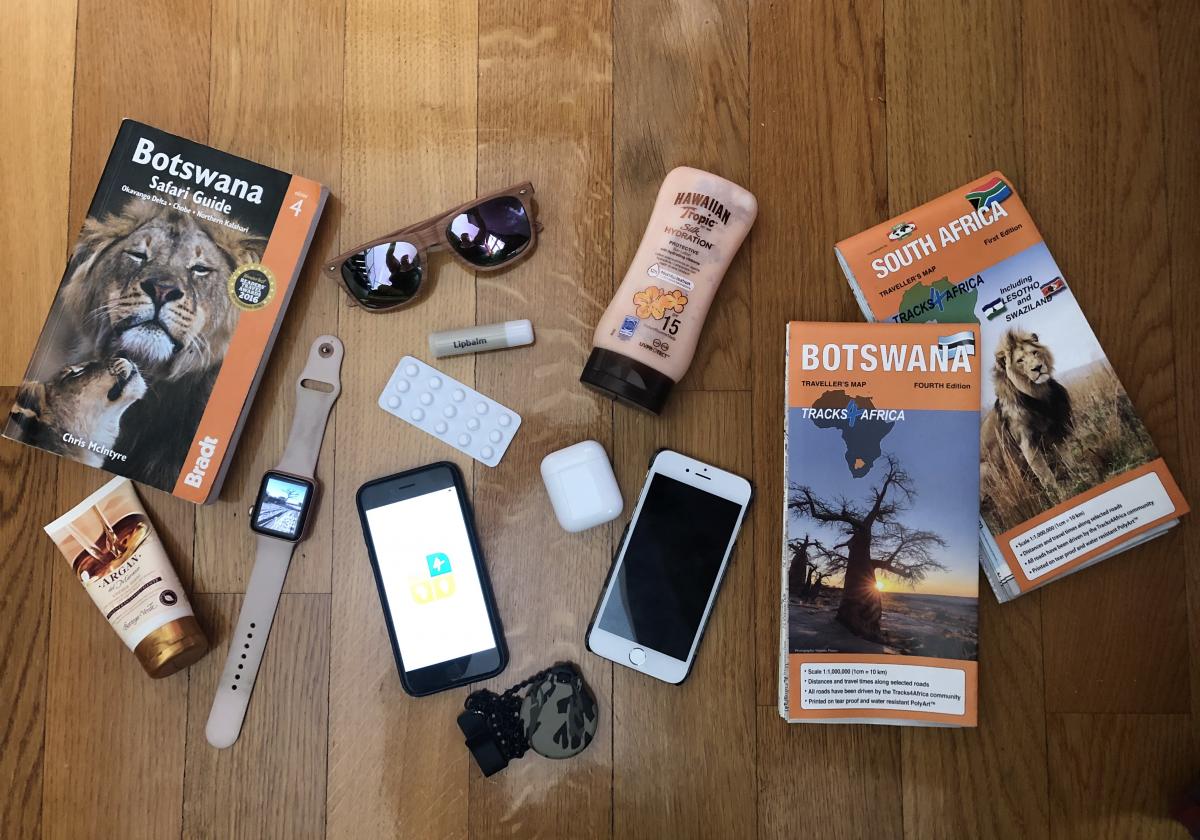
The perfect clothing for a safari in Africa
The clothing to wear on safari obviously depends in part on the period of the year in which the journey is made, but there are general rules that it would be good to follow.
In South Africa and in East Africa, the areas where safaris are usually done, there is a fair temperature range between day and night, especially during the winter months (from June to September); the best thing is to wear light clothing for the day and something heavier for the evening, such as a fleece.
Also in the morning we leave early for the safari and the cars are open so it's cold, a windproof jacket and a wool hat and possibly a scarf are ideal.
During the summer months (from December to March) the temperature range is lower, on hot days, in certain areas, such as the Kalahari basin, 40 degrees are reached, so light clothing is needed; the evening is not cold but the temperature is lowered and something heavier is needed.
To do a walking safari, throughout the year, it is best to wear long pants and something with long sleeves, this is to avoid getting scratched with the branches and thorns of the acacias, also to protect yourself from the bites of some insect that can be found in the vegetation.
It is always better to choose neutral colors for one's clothing, the whole range of colors going from beige to light green, up to dark green is the most indicated; while it is better to avoid bright colors such as red, orange, fuchsia and even black and blue, the latter especially in areas where tze tze flies that are attracted precisely by these two colors are present and their bites are painful, so it is better to avoid.
Better to wear a hat or something to cover your head, the sun is strong at these latitudes and you risk insolation without even noticing; moreover, with the car open you get a lot of air, if you have long hair it is better to protect them.
On a safari you need comfortable shoes and, if you do a walking safari, they must be strictly closed to avoid being scratched or stung by insects, arachnids or anything else.
I usually wear a pair of comfortable and light shoes for the day when we are by car and more closed and heavy shoes for the evening and for walking safaris.
On the summer months (from December to March) it is better to bring something for the rain, we always wear the poncho, it is practical and allows you to move freely and take photographs and, if necessary, to protect the camera; honestly we almost never use it, but it is always better to have it as a precaution.
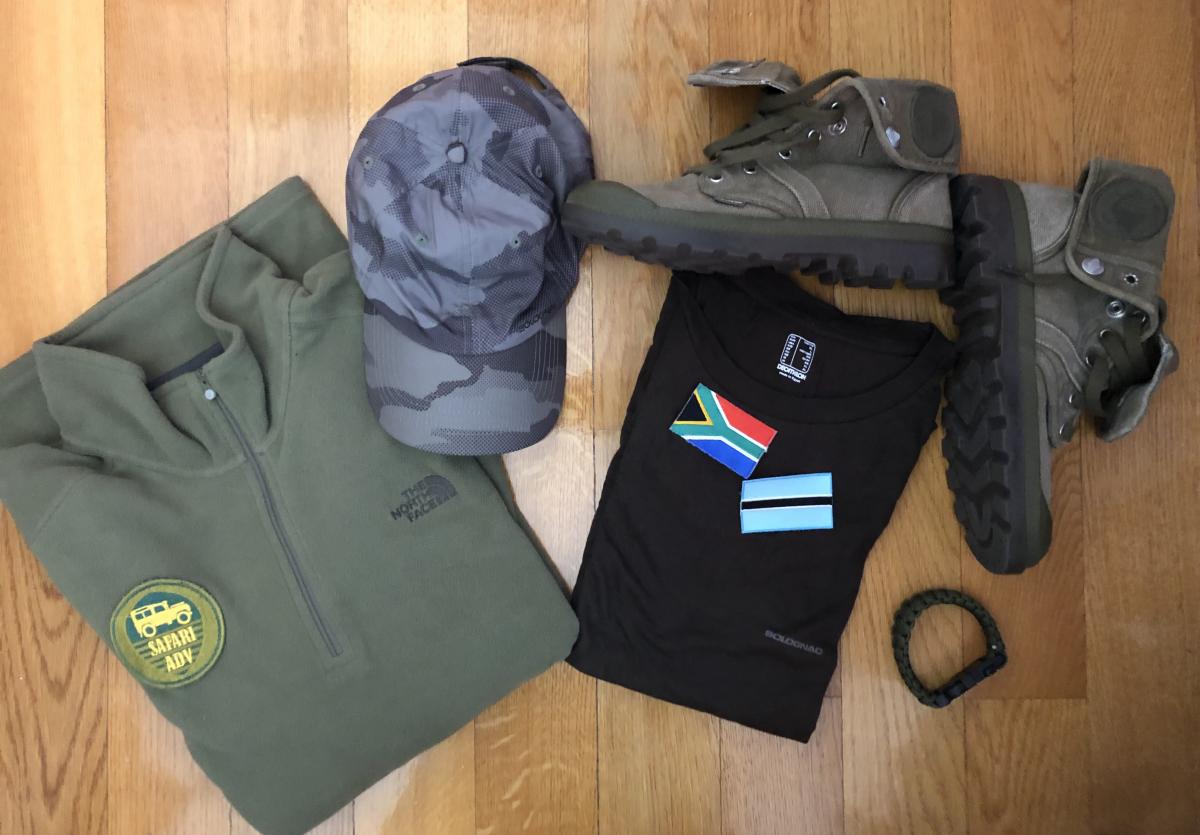
Photographic equipment for a safari in Africa
To take photographs during a safari it is essential to have a camera that has a zoom and that is able to take quality photos even in low light and to subjects that are quite far away.
It is also necessary to have a tool to shoot videos, reviewing some scenes once you are back home, is exciting; I don't particularly like taking videos, but on safari I always do it.
I use two reflexes, a Canon 7D Mark II as the main body and a Canon 7D as the second body, I have different lenses with different focal lengths that I use on different occasions; I also have a mirrorless, a Panasonic Lumix, that I use to take videos and to take moving pictures or during a walking safari, since it is much lighter than a reflex and still has a good resolution.
To shoot videos I have recently bought the DJI Osmo Pocket, it's a little gem; it has a drone camera and the videos are in 4K, it has a stabilizer that can be set up in different ways depending on the situation and the shooting effect you want to achieve.
In addition, you can also take photographs, do slow motion and timelapse and make panoramas horizontally or in square shape.
I also use my iPhone X, maybe to take selfies or to make boomerangs or hyperlapse or photos of funny situations or something else.
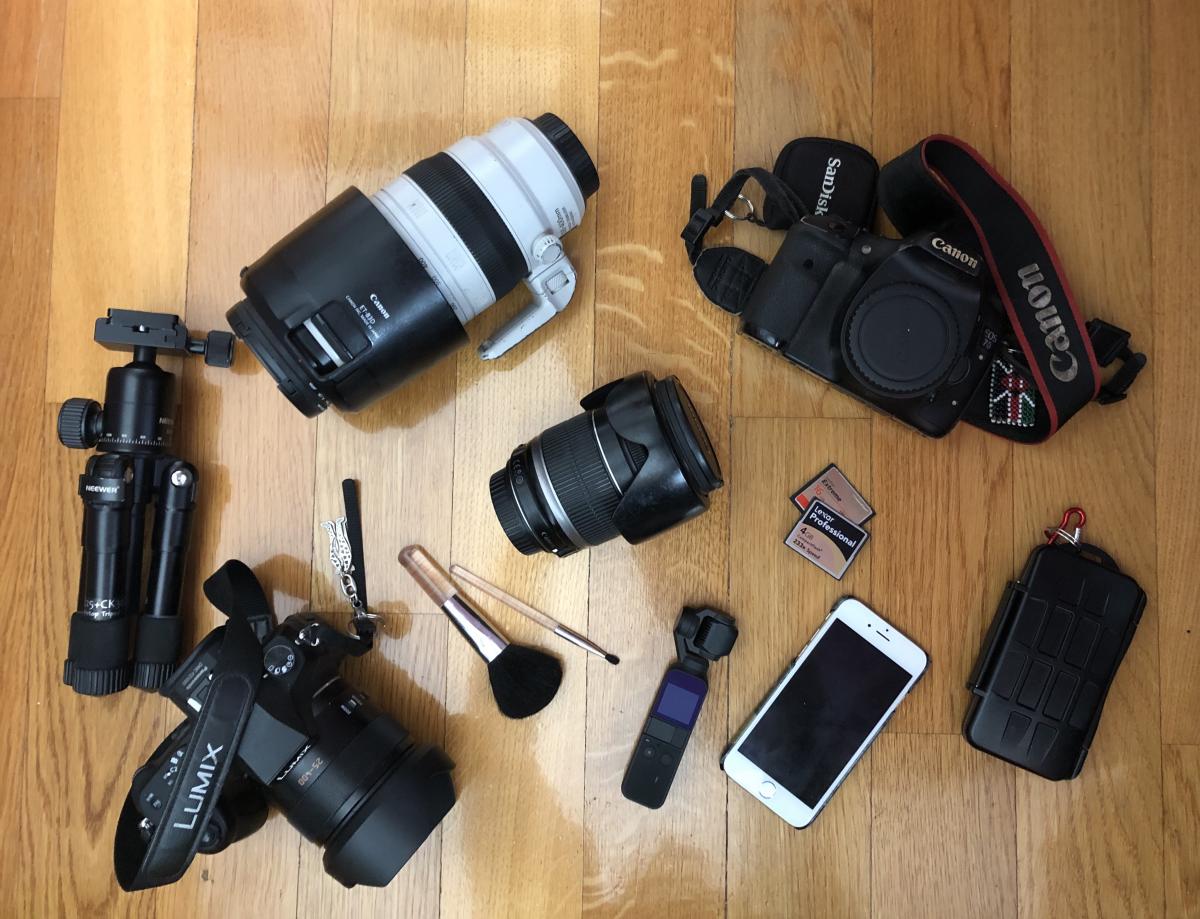
Books and equipment for a safari in Africa
In addition to the camera on a safari, other objects can be useful, depending on your needs and interests.
For example, I always carry binoculars, and I always recommend it to everyone, since it is very useful both for spotting the most distant animals, but also for being able to observe them "up close"; obviously it is the indispensable tool for birdwatchers, but it is also very interesting to observe mammals and other animals from a different perspective.
I always carry a bird identification book with me, I know the main families, but obviously I don't know all the species, so a book helps me not only to identify the correct species but also to remind me of those we have already seen or to check a new species from our list.
There are many other books that can be bought and taken on a safari to identify animals: mammals, arachnids, snakes just to name a few, but also specific books on the tracks to understand the territories or movements of animals and to be able to find them more easily.
Another object that I always wear on safari is a multi-purpose knife, it is always useful, more than you might think, not only as a knife but also the other tools can be fundamental in certain situations.
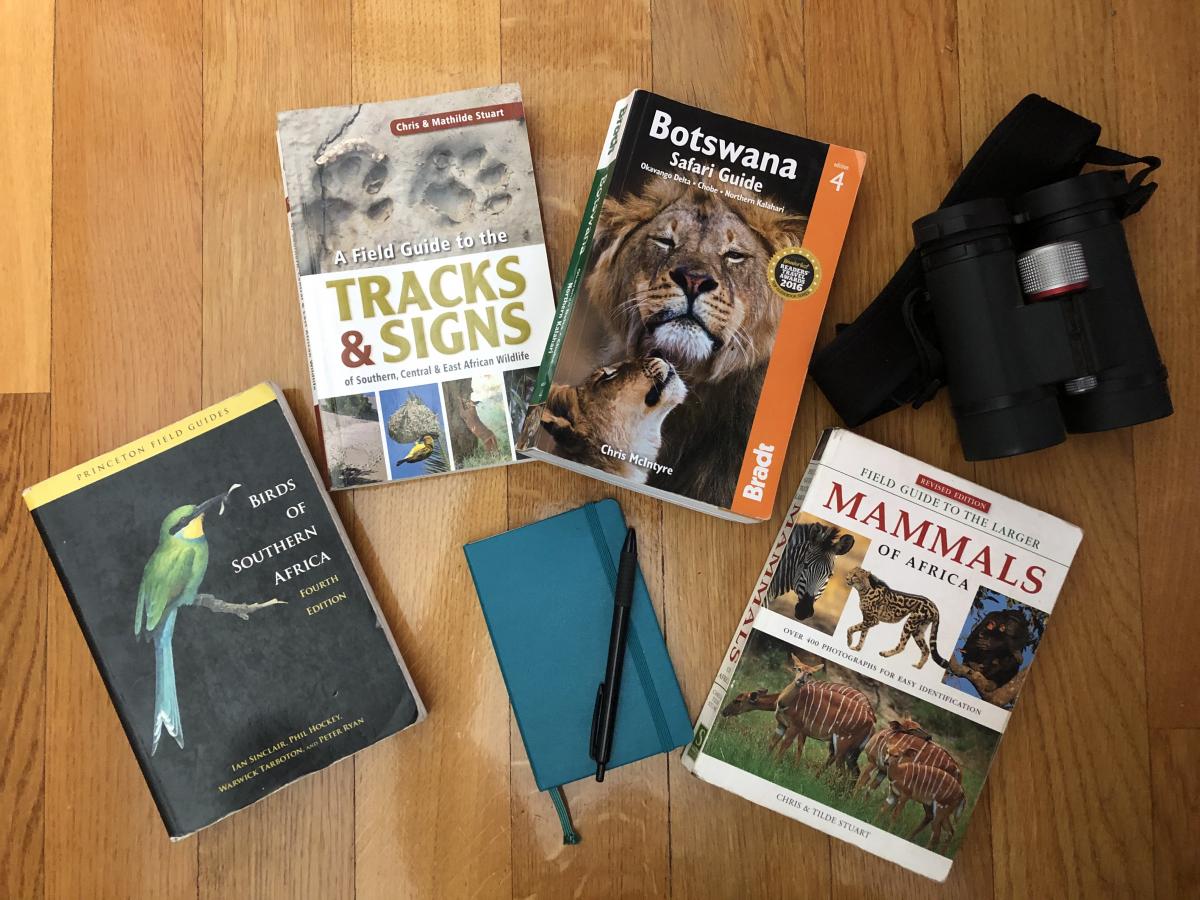
What cannot be missing in your suitcase for a safari in Africa
In addition to clothing and specific equipment, in the suitcase of a safari cannot be missing: the sunscreen, the sun being very strong, life-saving drugs, they are not found on site so it is good not to forget them, some counter drugs for any eventuality such as an antipyretic, something for the cold, lactic ferments and everything you might need; better to have and not use them rather than need them and not be able to find them.
Better to have a mosquito repellent with you, even if you go on a safari during the dry season, you may need it, even if it is not usually necessary in areas over 1000 meters.
Don't forget your sunglasses, the areas of Africa where you go on safari are between the Tropic of Cancer and the Tropic of Capricorn, here the solar radiation is higher than at our latitudes and the light can be very intense.
Better to have a universal adapter for power outlets, every African country adopts its own form but sometimes there are also other outlets from other countries, with the adapter you are more likely to be able to load the camera, the phone and more; we also always carry a multiple socket, so as to optimize time and load everything we need in the shortest possible time.
Two things that cannot be missing in the suitcase are a lip gloss and a moisturizing and nourishing face cream, the air you take during an open car safari, the sun and the often dry air make our skin need to be protected and cared for.
If your journey is a self-drive it is the case that you have guides, maps, GPS applications and everything you need to help you not to lose orientation and always find the right path.
Finally you should check the cost that your mobile operator applies to you for calls and internet use in the country where you are going; we always buy a local card, sometimes we rent a router for internet connection, in some countries we keep the card and use it every time we come back, in any case it is always cheaper than the card of your mobile operator.
What is best to bring for a self-catering safari in Africa
In the event that your trip is self-catering, that is that you will have to do the shopping and cooking, perhaps it is time to think to all those products that you are used to consume and that you might not find at your destination; I'm not saying to leave with the Esselunga shopping because it would be excessive, but maybe there are some products that you are not able to give up.
For example, I always carry vinegar because I don't like what I find in South Africa, sometimes we bring Parmigiano Reggiano because it is not found or has crazy prices, we also bring pasta because it is difficult to find Italian pasta and the local one is not good and at Malpensa duty free, we always buy Aperol, because we can't give up our sunset spritz in the savannah.
